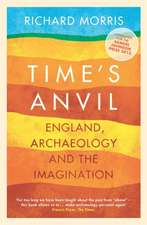British History Displayed: 1688–1950
Autor Margaret M. Ellioten Limba Engleză Paperback – 8 apr 2015
Preț: 319.40 lei
Nou
Puncte Express: 479
Preț estimativ în valută:
61.13€ • 63.33$ • 51.01£
61.13€ • 63.33$ • 51.01£
Carte tipărită la comandă
Livrare economică 22 martie-05 aprilie
Preluare comenzi: 021 569.72.76
Specificații
ISBN-13: 9781107502178
ISBN-10: 1107502179
Pagini: 362
Ilustrații: black & white illustrations
Dimensiuni: 140 x 216 x 20 mm
Greutate: 0.46 kg
Editura: Cambridge University Press
Colecția Cambridge University Press
Locul publicării:New York, United States
ISBN-10: 1107502179
Pagini: 362
Ilustrații: black & white illustrations
Dimensiuni: 140 x 216 x 20 mm
Greutate: 0.46 kg
Editura: Cambridge University Press
Colecția Cambridge University Press
Locul publicării:New York, United States
Cuprins
Part I. 1688–1789 (First Term): 1. Europe about the end of the seventeenth century; 2. Louis XIV of France; 3. William III, the Dutch King of England; 4. The war of the English succession; 5. The war of the Spanish succession; 6. Queen Anne and the Marlboroughs; 7. Queen Anne's London; 8. The country squire; 9. Women's occupations; 10. Food and cooking; 11. Children and their education; 12. Newspapers, music and musicians; 13. A King from Hanover, George I; 14. Sir Robert Walpole; 15. The war of the Austrian succession; 16. Georgian homes; 17. Transport; 18. British and French in North America; 19. British and French in India; 20. William Pitt: the Seven Years War; 21. George III (1760–1820); 22. The American colonies; 23. The American war; 24. Eighteenth-century village; 25. Bath; 26. The English church in the eighteenth century; 27. Eighteenth-century literature; 28. Painters: musicians: the theatre; 29. The Industrial Revolution: the coming of machines; 30. Ireland in the eighteenth century; 31. Scotland in the eighteenth century; Some suggestions for exercises and discussions; Part II. 1789–1860 (Second Term): 32. The French Revolution, 1789; 33. Britain and the French Revolution: young Mr Pitt; 34. The Napoleonic wars, 1803–15; 35. The Congress of Vienna: nationalism; 36. Central and South America; 37. Writers and musicians in the early nineteenth century; 38. After the wars; years of distress; 39. The Regency: age of the 'dandies'; 40. Canning's foreign policy; 41. Tory reforms: Catholic emancipation; 42. Reforms in factories and mines; 43. Roads and railways; 44. Revolts in France and Belgium, 1830; 45. Parliamentary reform; 46. Young Queen Victoria; 47. The 'hungry forties'; 48. The Crimean War (1854–6); 49. Socialism and Karl Marx; 50. The year of revolutions, 1848; 51. Material benefits; 52. Mid-Victorian homes and women: the Great Exhibition; 53. Religion in Victorian England; 54. 'Darwinism'; 55. Disraeli and Gladstone: the Treaty of Berlin; 56. India since the days of Clive: the Indian Mutiny; 57. Bismarck and the German Empire; 58. Unification of Italy; 59. Canada and Newfoundland; 60. Australia; 61. New Zealand; 62. The exploration and partition of Africa; Some suggestions for exercises and discussions; Part III. 1860–1950 (Third Term): 63. The United States; 64. British soldiers and sailors; 65. Education in nineteenth-century England; 66. Trade unions and socialism; 67. The Far East: China and Japan; 68. British and Boers in South Africa: the Boer War; 69. Sail and return; 70. Road transport in the later nineteenth century: balloons; 71. Gladstone and the Irish question; 72. The Egyptian question; 73. Gladstone's third ministry (1885–6): Lord Salisbury; 74. The British Empire in 1900; 75. Emancipated women; 76. The old Queen and her family; 77. Some Victorian writers; 78. The turn of the century 1890–1910; 79. Edward VII (1901–10); 80. Education: social reform; 81. The United States in the modern world; 82. World War I; 83. The treaty of Versailles, 28 June 1919; 84. The League of Nations; 85. Ireland after World War I; 86. The troubled twenties; 87. 'Empire' into 'Commonwealth'; 88. India; 89. Soviet Russia; 90. War clouds threaten again; 91. Causes of World War II; 92. The Second World War, 1939–45; 93. Post-war changes in the British Empire; 94. The modern world; Some suggestions for exercises and discussions; Index.
Descriere
Originally published in 1955, this book provides a general framework for one year's syllabus of history teaching in secondary schools.















